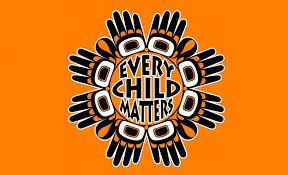 I would first like to acknowledge, that I live and work in Langley BC, on the traditional lands of the Katzie, Kwantlen, Matsqui, and Semiahmoo First Nations . With the latest developments in the news regarding the findings of unmarked graves at the sites of residential “schools”, I thought it was extremely important to support my school and staff for this upcoming Orange Shirt day. Although I know that Indigenous content needs to be taught year round, residential schools and Orange Shirt Day are my focus for this inquiry project. I wanted to create a digital artifact and tool that could be used by staff and students and help to make the difficult and painful subject of Orange Shirt Day a little less overwhelming.
I would first like to acknowledge, that I live and work in Langley BC, on the traditional lands of the Katzie, Kwantlen, Matsqui, and Semiahmoo First Nations . With the latest developments in the news regarding the findings of unmarked graves at the sites of residential “schools”, I thought it was extremely important to support my school and staff for this upcoming Orange Shirt day. Although I know that Indigenous content needs to be taught year round, residential schools and Orange Shirt Day are my focus for this inquiry project. I wanted to create a digital artifact and tool that could be used by staff and students and help to make the difficult and painful subject of Orange Shirt Day a little less overwhelming.
I think it is is useful to think of my artifact through a few different lenses. The First People’s Principles of Learning is a document that I think we are all familiar with at this point. There are some important points laid out in it that helped me direct my learning when it came to the artifact. Although I could probably apply all of the principles I choose to focus on a few. 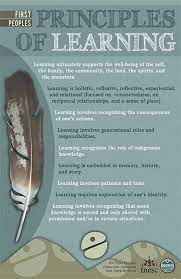 The first principle, “Learning ultimately supports the well-being of the self, the family, the community, the land, the spirits, and the ancestors.” As teachers we have the necessary job to teach the kids this history and its devastating affects. I know this is a difficult subject to teach and educators are overwhelmed and scared to do so. That’s why I wanted to make a digital artifact that would be easy to navigate and offer teachers and students easy access to wonderful books and resources. This brings me to the next principle I chose to focus on, “Learning recognizes the role of indigenous knowledge.” All of the resources and books I chose are authentic, indigenous authors. This is extremely important because unfortunately there are a lot of inauthentic books and websites out there. As educators and as a settler here in BC, it is imperative that we hold space for Indigenous knowledge holders. The last principle I choose to focus on through my artifact is, “Learning is embedded in memory, history, and story.” residential schools may have been a horrible part of Canada’s history but there is much to learn from this. I wanted to put together books and resources that would show the stories and also the impact they had on history and our collective memory.
The first principle, “Learning ultimately supports the well-being of the self, the family, the community, the land, the spirits, and the ancestors.” As teachers we have the necessary job to teach the kids this history and its devastating affects. I know this is a difficult subject to teach and educators are overwhelmed and scared to do so. That’s why I wanted to make a digital artifact that would be easy to navigate and offer teachers and students easy access to wonderful books and resources. This brings me to the next principle I chose to focus on, “Learning recognizes the role of indigenous knowledge.” All of the resources and books I chose are authentic, indigenous authors. This is extremely important because unfortunately there are a lot of inauthentic books and websites out there. As educators and as a settler here in BC, it is imperative that we hold space for Indigenous knowledge holders. The last principle I choose to focus on through my artifact is, “Learning is embedded in memory, history, and story.” residential schools may have been a horrible part of Canada’s history but there is much to learn from this. I wanted to put together books and resources that would show the stories and also the impact they had on history and our collective memory.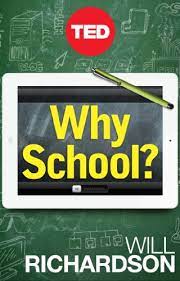
I was also interested in delivering my artifact completely through digital means. I know that a lot of teachers will be asking for the same resources at the same time. So I thought by providing all digital sources everyone could have access at the same time. Also, students are very engaged with anything digital. I wanted to provide a lot of online resources as well to support the digital books. Resources that could support inquiry learning. In, Will Richardson’s ebook “Why School?”, we see Minecraft as an example where digital learning could provide open ended inquiry learning. This book helped push me towards using digital sources and websites that were interactive. Like the example of Minecraft, I wanted to highlight skills such as: collaborating, self directing inquiry, problem solving, and integrating digital and multi media.
Without further ado, I present to you my digital artifact: Orange Shirt Day: A Symbaloo reading curation and interactive, inquiry based websites to support. The artifact is available at the end of this blog post. Some of you may be asking, “what is a Symbaloo?” It is basically is a visual bookmarking tool that makes it simple and fun to organize the best of the web. You have all your favorite websites at your fingertips. With an account you can access your bookmarks from everywhere with any device and share your online resources with others. It is absolutely free to sign up (the paid version is ad-free) here is a link to sign up: https://www.symbaloo.com/signup/start
The theme of this curated collection is books (digital) that support The Truth and Reconciliation Act, the history and legacy of residential schools and Orange Shirt day, which falls on September 30. Residential Schools continue to have far reaching affects on indigenous and non-indigenous communities. Starting this conversation is just the first step in this long and necessary process. Sometimes the easiest way to start the conversation or this process is through a good quality and authentic picture book. My artifact contains 1o read alouds all available online. Some are read by the actual author and all of these books are authentic Indigenous texts from Canadian authors. I have also included ten interactive sites that support these books and the important work of reconciliation. These sites include primary sources, teacher resources, interviews, films and more. Keep in mind that residential schools and reconciliation is a very difficult (but necessary) subject and some students may be triggered by some of the stories or information. It is important to pre-screen any of the books beforehand and determine if they are right for your students.
But First, How did I get here?
I was reading a book,”Genocidal Love” by Bevann Fox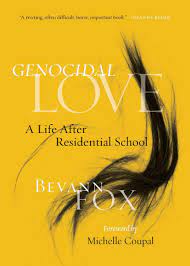 , while more news was coming out about children being found in residential schools. I was of course thinking about what I can do this fall to help my staff and students in the fall. At first my inquiry was how can I use digital sources and resources to help support reconciliation? I was a little overwhelmed because there are so many sources out there. I began by creating a curation of digital books that focus on residential schools. They are all mostly picture books but can most definitely be used for ANY age. The books are fantastic and as mentioned before they are all authentic and mostly local, Indigenous books that will be very helpful to support Orange Shirt Day, or any day throughout the year.
, while more news was coming out about children being found in residential schools. I was of course thinking about what I can do this fall to help my staff and students in the fall. At first my inquiry was how can I use digital sources and resources to help support reconciliation? I was a little overwhelmed because there are so many sources out there. I began by creating a curation of digital books that focus on residential schools. They are all mostly picture books but can most definitely be used for ANY age. The books are fantastic and as mentioned before they are all authentic and mostly local, Indigenous books that will be very helpful to support Orange Shirt Day, or any day throughout the year.
Here is my original curated list:
Digital Books to Support Orange Shirt Day:
1.When I Was Eight Christy Jordan-Fenton, Illustrations by Margaret Pokiak-Fenton,and Gabrielle Grimard
From the author of Fatty Legs comes a story about a girl named Olemaun who is eight and knows a lot of things. But she does not know how to read. Ignoring her father’s warnings, she travels far from her Arctic home to the outsiders’ school to learn. The nuns at the school call her Margaret. They cut off her long hair and force her to do menial chores, but she remains strong. Her strength draws the attention of a nun who tries to break her spirit at every turn. But the young girl is more determined than ever to learn how to read. Based on the true story of Margaret Pokiak-Fenton, and complemented by stunning illustrations, When I Was Eight makes residential schools accessible to younger readers.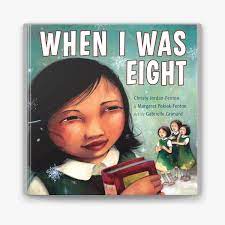
- Shi-shi-etko Nicola I. Campbell, illustrated by Kim LaFave
Shi-shi-etko just has four days until she will have to leave her family and everything she knows to attend residential school. She spends her last precious days at home marveling in the beauty of nature and her treasured family and way of life. Her mother, father, and grandmother take the time to share valuable teachings that they want her to remember. Shi-shi-etko carefully gathers her memories for safekeeping. This book is for all ages and tells the story from the child’s perspective. A perspective that is profoundly positive even though she is about to experience a great loss. A very important read for all on the loss Indigenous peoples have faced because of colonialism, residential schools and racism in Canada and beyond. 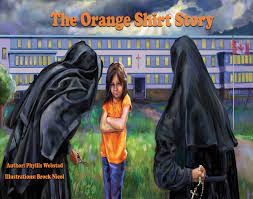
- The Orange Shirt Story Phyllis Webstad and Brock Nicol.
When Phyllis Webstad (née Jack) turned six, she was sent to a residential school for the first time. On her first day at school, she proudly wore a shiny orange shirt that her Granny had bought for her. When she arrived at school, she was told that she could not wear her favourite shirt. It was taken away from her, never to be returned. The Orange Shirt Story tells the true story of Phyllis and her orange shirt and of Orange Shirt Day, an important day of remembrance for Indigenous peoples and all Canadians.
- When we were Alone David A. Robertson, illustrated by Julie Flett
When a young girl helps tend to her grandmother’s garden, she begins to see things about her grandmother that make her curious. Why does her grandmother have long braided hair and wear beautifully coloured clothing? Why does she speak another language and spend so much time with her family? As she asks her grandmother about these things, she is told about life in a residential school a long time ago, where everything was taken away. When We Were Alone is a story about residential schools and the damage that ensued. This story is suitable for all ages.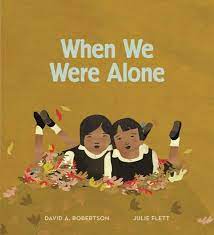
- Shin-chi’s Canoe Nicola Campbell. Illustrated by Kim LaFave
From the same creators as Shi-shi-etko, comes a book about six-year-old Shin-chi as he heads to residential school for the first time with his older sister. It is the sequel to Campbell’s Shi-shi-etko. The story shows children being driven away in the back of a cattle truck, Shin-chi’s sister tells him all the things they must remember about home. Shin-chi knows it will be a long time before he sees his family, not until the sockeye salmon return. Shin-chi endures a long year of hard work, hunger and loneliness before returning home to his family with his sister. This story is for all ages and although it is a sequel could be read on its own or in any order.
- Stolen Words Melanie Florence Illustrated by Gabrielle Grimard
Gilpin, Jennifer. “Stolen Words.” YouTube, 23 Sept. 2018, www.youtube.com/watch?v=y4TA88cz7HU.
This is a story of the beautiful relationship between a little girl and her grandfather. When the girl asks her grandfather how to say something in his language, Cree, he tells her that his language was stolen from him when he was a boy. The little girl then sets out to help her grandfather find his language again. This sensitive and beautifully illustrated picture book explores the intergenerational impact of Canada’s residential school system, and the impact it continues to have on Indigenous children and families. Suitable for all ages.
- You Hold Me Up Monique Gray Smith, illustrated by Danielle Daniel
Orca Book Publishers. “Monique Gray Smith Reads ‘You Hold Me Up.’” YouTube, 21 Aug. 2017,www.youtube.com/watch?v=Uiuev2fXvRU.
This beautifully illustrated book encourages children to show love and support for each other and to consider each other’s well-being in their everyday actions. Monique Gray Smith wrote You Hold Me Up to start a dialogue among young people, their care providers and educators about reconciliation and the importance of the connection’s children make with their friends, classmates and families. This is an important book about building relationships, fostering empathy and encouraging respect between peers, starting with our children. Appropriate for all age ranges.
- As Long as the Rivers Flow Larry Loyie, Constance Brissenden illustrated by Heather D. Holmlund
Seery, Kristina. “As Long as the Rivers Flow.” YouTube, 17 Mar. 2020, www.youtube.com/watch?v=eiY015KDWFM.
This is the story of Larry Loyie’s last summer before entering residential school. The story takes place in Northern Alberta and follows the character, ten-year-old Lawrence and his Cree family. It is a time of learning and adventure. He cares for an abandoned baby owl and watches his grandmother make winter moccasins. He helps the family prepare for a hunting and gathering trip. The narrative approach shows readers what this Cree family was like during the last summer before residential school. Themes of family values, learning by doing, and Cree culture add to the book’s value. It is highly recommended for elementary students.
- Fatty Legs: A True Story Christy Jordan-Fenton and Margaret Pokiak-Fenton illustrated by Liz Amini-Holmes
Annick press. “Christy-Jordan Fenton Reads the First Chapter of Fatty Legs.” YouTube, 14 Apr. 2020, www.youtube.com/watch?v=53VZxiHBG0k.
This is a true story about eight-year-old Margaret Pokiak who has set her sights on learning to read, even though it means leaving her village in the high Arctic. Faced with unceasing pressure, her father finally agrees to let her make the five-day journey to attend school, but he warns Margaret of the terrors of residential schools. At school Margaret soon encounters the Raven, a black-cloaked nun with a hooked nose and bony fingers that resemble claws. She immediately dislikes the strong-willed young Margaret. Intending to humiliate her, the heartless Raven gives gray stockings to all the girls — all except Margaret, who gets red ones. In an instant, Margaret is the laughingstock of the entire school. In the face of such cruelty, Margaret refuses to be intimidated and bravely gets rid of the stockings. Although a sympathetic nun stands up for Margaret, in the end it is this brave young girl who gives the Raven a lesson in the power of human dignity. This book is recommended for upper elementary students grade 3 and up.
- My Heart Fills with Happiness
Monique Gray Smith, illustrated by Julie Flett, translated by Mary Cardinal Collins
This is a beautiful board book which reminds its readers to reflect on the little thigs in life that bring us joy. The sun on your face. The smell of warm bannock baking in the oven. Holding the hand of someone you love. What fills your heart with happiness? Author Monique Gray Smith wrote My Heart Fills with Happiness to support the wellness of Indigenous children and families, and to encourage young children to reflect on what makes them happy.
So after hours of double checking sources ( a classmate suggested checking if a book is authentic by searching it using the website https://www.strongnations.com/ ) I was happy with my list but it did not seem like enough. I thought all of these books were fabulous but it was just a start
So then I began to scour the internet for interactive websites that would make these books even stronger. That would provide students with a way to answer questions they may have or to help guide an inquiry. I came up with a list of interactive websites and resources. Here they are….
Interactive Websites to Support
1.Project of heart http://projectofheart.ca/
Project of Heart is an inquiry based, hands-on, collaborative, inter-generational, artistic journey of seeking truth about the history of Aboriginal people in Canada. Its purpose is to examine the history and legacy of Indian Residential Schools in Canada and to seek the truth about that history, leading to the acknowledgement of the extent of loss to former students, their families and communities. Also, to Commemorate the lives of the thousands of Indigenous children who died as a result of the residential school experience. This has a big B.C focus and a ton of resources for teachers and students.
2.Secret path https://secretpath.ca/
This is a website dedicated to the poems, album and graphic novel “Secret Life” by Gord Downie and Jeff Lemire. Downie was inspired by the story of Chanie Wenjack, a twelve-year-old boy who died fifty years ago on October 22, 1966, in flight from the Cecilia Jeffrey Indian Residential School near Kenora, Ontario, walking home to the family he was taken from over 400 miles away. This website is best suited for intermediate students and up. It includes a film and discussion panel, interviews, talk with the illustrator and so much more.
3.Legacy of hope foundation http://legacyofhope.ca/
Legacy of Hope provides resources, lessons, ideas and online exhibitions focused on Canada’s century-long Indian residential school system. They support healing and reconciliation in the classroom, in communities and across the country.
- Was there a residential school near you? https://www.cbc.ca/news/indigenous/residential-school-interactive-map-beyond-94-1.4693413
Was there a residential school near you? Take your students on a journey and have them discover where the closest residential school was on this interactive map. The website also includes interviews from actual survivors. A great visual source of information for all ages. Warning the interviews might be triggering for some students.
- Fatty Legs http://empoweringthespirit.ca/fatty-legs-webinar-series/
This website is dedicated to Fatty Legs the book. However, it could be used even if you are not using the novel in your classroom. This two-part webinar series is about the book Fatty Legs, which includes meeting the author of the book and her mother-in-law (whom the book is about) and a teacher who has used the book with her grade seven classroom. You will learn about the origin of the book and how it can be used to support student learning about the topic of residential schools.
- The First Nations Education Steering Committee: http://www.fnesc.ca/irsr/
This website provides classroom resources and other materials related to truth and reconciliation. It also includes a ton of resources grouped by age range with topics including first nations math, authentic First people’s resources and science to name a few.
- Where are the children: http://legacyofhope.ca/wherearethechildren/
This website has an interactive timeline of the political events and the events of residential schools, as well as over 40 videos of survivor’s stories.
8.Truth and reconciliation act of Canada http://www.trc.ca/
Read the final report from the Truth and Reconciliation Commission of Canada on the commission’s official website and learn more about the TRC.
- Residential School Archive Project: The Children Remembered https://thechildrenremembered.ca/school-locations/
This website was developed by the United Church of Canada Archives. It gives detailed histories of several Indian residential schools in Canada.
10.Orange Shirt Day https://www.orangeshirtday.org/
Everything including the origins and history of Orange shirt day. Teacher resources and pictures
- Residential schools and reconciliationhttps://learning.royalbcmuseum.bc.ca/pathways/residential-schools-reconciliation/read/
This site contains actual primary documents from two residential schools in BC including video footage
So Now I was cooking! I was happy with my curation and also pleased with my digital resources to help support. But it still felt like it was lacking. I feel like if I were to email this lovely list of books and resources many teachers would just be overwhelmed and possibly not use it. I wanted to try and be a little adventurous and try some new technology I have not used before. This is when I was introduced to Symbaloo.
Why Symbaloo?
Ok as I mentioned previously, Symbaloo is a app that lets you visually bookmark any of your favourite sites in one place. You can make themes to your bookmarks and it helps you keep track and organize online resources. It is free and very easy to use. I thought this would be the perfect tool to get my teachers and students excited about these resources. It is highly visual so online documents and websites don’t get lost in he mix. Also, it allows anyone to curate or create mixes around a theme. Teachers are always looking for new tools to help stay organized so while I am introducing or maybe reintroducing books and sources I could also intro this easy to use tool. This tool also allows the document to be changed or added to. Unlike a lot of paper documents, it is easy to edit and add to. You can even collaborate with others on a webmix.
Here is my Symbaloo I created >>>>>>>>https://www.symbaloo.com/shared/AAAACBe6ZHUAA42AhAK30w==

I hope that my staff and others will find it very useful and perhaps add to it throughout the year. We could also collaborate on other themes and topics.
But wait there is more….
After chatting with classmates and our teacher Darcy, I decided I could take this one step further. Darcy suggested that I try doing a screen broadcast explaining the books and resources, I have chosen through my Symbaloo. This is something I have never done before and honestly made me extremely anxious! I do not like the sound of my own voice and I get nervous doing anything like this. But, I was up for the challenge! I also thought this would be excellent to show my staff how to use the new app and at the same time demonstrate and explain why I chose the sources. With Covid and restrictions still in question, I may not have the ability to demo these resources in person to my staff. Also, if I just emailed out the Symbaloo or list or resources many staff may just bury them in a pile of things they are already bogged down with. I thought this was really a learning opportunity for me as well as a chance to highlight these great resources. I plan on sharing this screen cast, the Symbaloo and this blog post with my school during the first week back. I Know that teachers have a lot going on at this time but September 30 will roll around very quickly!
I thought that recording my screen and sharing all of my info was going to be tedious and arduous. I could not be more wrong. Thanks to a highly informative slideshow from Darcy I was able to make all of my screen broadcasting come true! I am sure there are other ways to do this too, but this seems like the easiest option for Apple users. 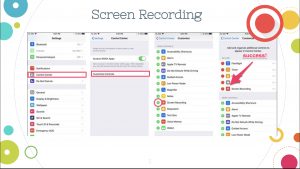
So with some trial and error I created a screen cast of my demonstrating my Symbaloo and all of the wonderful books and resources I have curated. Ok honestly, I deleted the first three I created. It still is not perfect and I still have a lot to learn. I hope it is the start of me becoming more comfortable and confident creating digital resources like this.
 Here is my first ever Screen recording:https://youtu.be/hfd-uuOzBps
Here is my first ever Screen recording:https://youtu.be/hfd-uuOzBps
In The Future…
If this artifact is useful for my staff and school , I may create more using the same process. It seems like creating screen broadcasts may be very useful to demo how to use new apps and technology and also when sharing new books and resources.I could even do a Pro D on apps like Symbaloo and others using my new skill of using screen broadcasts. Teachers may also want to collaborate with me in creating Symbaloos based on themes and subjects throughout the year. I feel like this would be so useful to everyone because a lot of times very useful info and sources online get lost in the vast amounts of information out there. If we all had one place to go and collaborate together this could be a game changer! I hope that along the way I may have inspired someone else to try something new. To keep the First Peoples learning principles in mind while navigating new technology is also a very useful lens to use while trying new things.
References:
Annick press. “Christy-Jordan Fenton Reads the First Chapter of Fatty Legs.” You tube, 14 Apr. 2020, www.youtube.com/watch?v=53VZxiHBG0k.
Campbell, Nicola I., and Kim LaFave. Shi-Shi-Etko. Groundwood Books, 2005.
Clarke, B. (n.d.). Orange Shirt Symbaloo. Retrieved August 7, 2021, from https://youtu.be/AoLmJi8YId8
Florence, Melanie, and Gabrielle Grimard. Stolen Words. CELA, 2018.
Gilpin, Jennifer. “Stolen Words.” You tube, 23 Sept. 2018, www.youtube.com/watch?v=y4TA88cz7HU.
Jordan-Fenton, Christy, et al. When I Was Eight. Annick Press, 2013.
Jordan-Fenton, Christy, et al. Fatty Legs: A True Story. Annick Press, 2020.
Learning First Peoples Classroom Resources – First Nations Education Steering Committee FNESC. (2020, October 20). First Nations Education Steering Committee FNESC. http://www.fnesc.ca/learningfirstpeoples/
Loyie, Larry, et al. As Long as the Rivers Flow. Groundwood Books, 2003.
McNee, D. L. (n.d.). Tech4Learning: Making Thinking Visible with Apple Technology[Google Slides].
Monique Gray Smith. “My Heart Fills with Happiness.” You tube, 26 June 2017, www.youtube.com/watch?v=sBCNFMzvyl4
Orca Book Publishers. “Monique Gray Smith Reads ‘You Hold Me Up.’” You tube, 21 Aug. 2017, www.youtube.com/watch?v=Uiuev2fXvRU.
Richardson, Will. Why School?: How Education Must Change When Learning and Information Are Everywhere (Kindle Single) . TED Conferences. Kindle Edition.
Robertson, David, and Julie Flett. When We Were Alone. Highwater Press, 2016
Seery, Kristina. “As Long as the Rivers Flow.” You tube, 17 Mar. 2020, www.youtube.com/watch?v=eiY015KDWFM.
Shin-Chis Canoe. Moving Images Distribution, 2018.
“Shin Chi’s Canoe by Nicola Campbell. Read by Grade 7/8 Students.” You tube, 25 Sept. 2017, www.youtube.com/watch?v=ktV1CdIUEIY.
“Shi Shi Etko.” You tube, 16 Sept. 2016, www.youtube.com/watch?v=Ha6vMDGmzYo.
Smith, Monique Gray, et al. You Hold Me up = Gimanaadenim. Orca Book Publishers, 2021.
Smith, Monique Gray, et al. My Heart Fills with Happiness = Nijiikendam. Orca Book Publishers, 2021.
“The Orange Shirt Story Read Aloud.” You tube, 25 Sept. 2018, www.youtube.com/watch?v=MPTnKXK92R4.
Webstad, Phyllis, and Brock Nicol. The Orange Shirt Story. Medicine Wheel Education, 2018.
When I Was Eight – YouTube. www.youtube.com/watch?v=LSBrkJn3NeI.
“When We Were Alone Read Aloud.” You tube, 25 June 2018, www.youtube.com/watch?v=1ExGDcnPH38.
